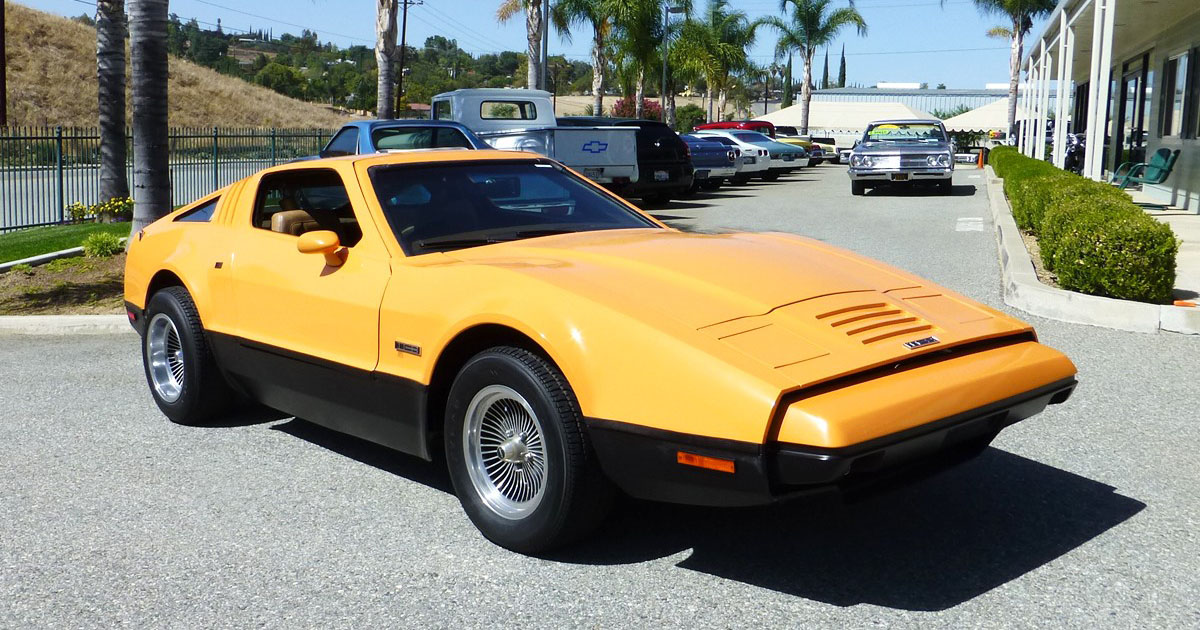The Worst Cars From the 1970s
The ‘70s are known for producing some of the greatest muscle cars of all time. It was the era of big engines, big torque and the concept of a ten-second car. This list will feature none of those behemoths. Instead, we’re going to look at the worst cars to come from this era. While the sports departments were building iconic legends of the motoring community, others in the world of car design were giving a sound reason and good ideas the old heave-ho, while they produced these less than stellar options. While some of the problems associated with these cars stem from responses to the oil crises in ‘73 and again in ‘79, as well as increased regulations passed during the second half of the decade, many are the results of poor decision making and cost-cutting in the wrong places.
1975 AMC Pacer

American Motor’s put out this wide riding compact as a response to the growing market for small, fuel-efficient cars. The car’s width didn’t scale down with the rest of the vehicle, giving it a broad stance and amplifying the massive amount of glass that housed the cab. The Pacer tried to break a lot of new ground when it first released, introducing the mass market to the cab-forward design. The body of the Pacer was over a third glass, which garnered the nickname the “flying fishbowl.” Unfortunately, for everything the Pacer tried to do, it failed to meet the fuel economy of imported rivals, partly because AMC was forced to use their existing straight-six engine after GM stopped producing the rotary engine the Pacer was initially designed to house. This unexpected hiccup forced last-minute changes to the engine bay, and the larger engine couldn’t compete with the efficiency of four-cylinder engines offered elsewhere.
Our next model belongs at the bottom of the ocean, just as its name suggests.
1971 Morris Marina

This little British model has been bullied pretty extensively since it hit the roads. While the vehicle sold just fine - Morris, owned by British Leyland, put out a quarter million vehicles in under two years - the car is severely lacking in retrospect. The first 30,000 or so vehicles were produced with an incorrect suspension setup which resulted in little to no camber change of the front wheels during turns. This led to notable understeer in the review cars that went to media outlets. Morris fixed the issue, but more problems with the vehicle extended beyond poor handling. From its conception, the Marina was the result of many cost-saving compromises, including using the sedan model doors on the coupe version, making what was supposed to be the superior sports model into an oddly styled pared down version of the base sedan. If the understeer didn’t get you, the ineffective dampers on the rear that facilitated more than a comfortable level of bump steer on rough roads would.
Our next car is another British Leyland rolling bucket of fail.
1975 Triumph TR7

The TR7 is another vehicle that suffered from cost-cutting compromises at the hands of British Leyland. While the wedge shape that defines this classic sports car was well ahead of its time, the car would go on to drive a wedge among car enthusiasts who either loved the little coupe or hated it. I’ll try to go easy on the British cars that came out around this time since England was still recollecting themselves after the war and materials were often in short supply. However, economic issues aside, the little four-banger power plant suffered from repeated blown head gaskets,was underpowered and failed to live up to the expectations set by the body styling.
Our next is another sleek looking ride that just couldn't cut it.
1975 Bricklin SV-1

This isn’t our first time taking shots at the infamous Bricklin, and I’m sure it won’t be the last. The SV-1, while peppy and responsive, was riddled with enough quality control issues to make a Chinese toy factory take pause. Using techniques that were neither proven nor perfected, meant the Bricklin racked up production costs for the company through panels that would crack in their molds. Overheating was a common issue with the hearty V8s that the SV-1 employed since Bricklin failed to provide an adequate cooling system for the engine. Even after enlarging the vents, SV-1s could be found taking a moment to chill out on the side of the road.
Our next manufacturer wanted to create a car for the future, but things don’t always work how you want them to.
1973 Austin Allegro

Here’s another unique item from the company who just couldn’t seem to get themselves together during the ‘70s - British Leyland, this time under the Austin banner. The Allegro should have been a decent car, except it got hung out to dry by the company heads, who saw the growing market for hatchbacks and decided that the Austin Maxi should be the only hatchback in the lineup, even though the Allegro was designed for it. Early models also featured a quadratic steering wheel that was little more than a rounded off square. The manufacturer insisted that the wheel was futuristic, but quietly removed them for a more traditional steering design in 1975. The car’s dubious quality in early models took a toll on the car’s reputation, and with more efficient cars that suffered from fewer cost-cutting compromises, the Allegro petered out after a decade.
Our next car is a foreign model with an uninspired name.
1972 Renault Le Car

The Le Car was a rebranded Renault 5 for North American drivers, marketed through AMC’s network of dealerships at the time. The little subcompact was only offered as a three-door hatchback until 1980, running a small 55 hp inline four. There seems to be a deep divide surrounding Le Car; those who look back with rose colored glasses on what was an efficient and reliable econocar, and others who remember the ever-growing cost of repairs throughout the car’s lifetime as the body rusted out around the parts they were replacing. Surprisingly, however, track models of the Le Car fared well in stock C-class races at the time.
Our next up has earned its right to be featured on some unfavorable lists.
1971 Ford Pinto

What can we say about the Pinto that hasn’t alreadybeen said? We’re going to make like Ford and ignore the fuel system issues that put this car in the middle of a literal firestorm since the list of problems on this car is longer than the ugly window Ford stuck on the hatchbacks. After just two months on the market, the Pinto faced its first of several recalls: they recalled 26,000 vehicles for sticky accelerator pedals. Another 220,000 cars were recalled less than six months later for an issue where a backfire in the carburetorcould ignite fuel vapors in the engine's air filter. And this is all before Ford faced any backlash or lawsuits from the fuel tank debacle. Oops, I guess I couldn’t ignore it forever - just like Ford.
Up next, another disappointment from the blue oval.
1974 Ford Mustang II

Probably the biggest disappointment of the decade in retrospect, the Mustang II was the result of Ford trying to maintain a pony car in the heat of oil embargos and new efficiency standards. Paring back the muscle car to an Econo-cruiser wasn’t the issue that most people have a qualm with, but rather the use of the Mustang name on a car that didn’t have the performance that the badge suggested. While it may have been the right car for the time, anyone looking to drive a classic pony car will be sorely disappointed in the performance of the II.
Initially only offering an inline 4 or a 2.8L V6, Ford finally gave in and brought back the V8 for ‘75 models to reclaim some of the Mustang's previous reputation as a performance car.







